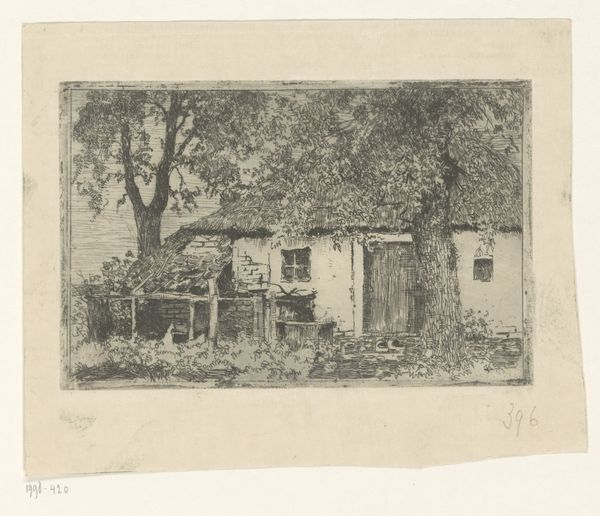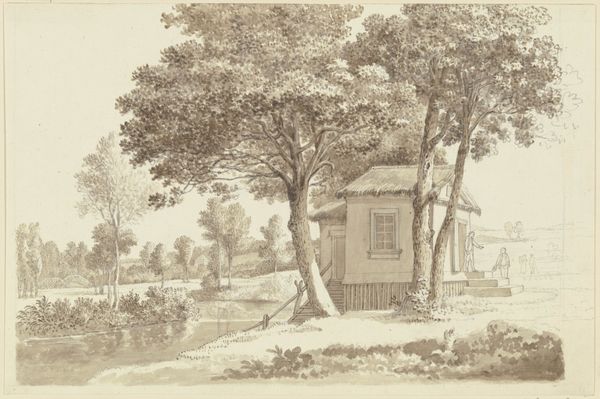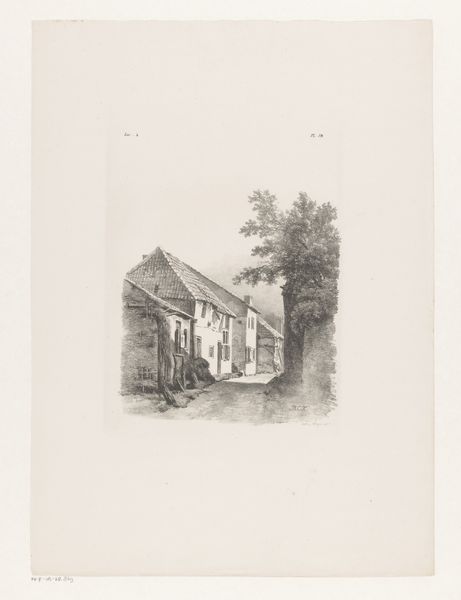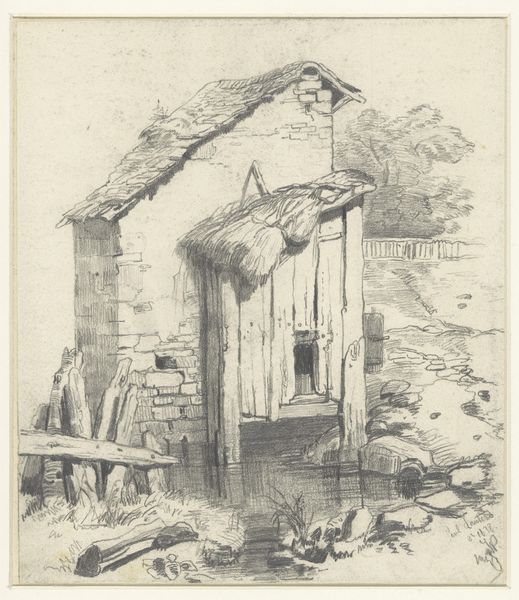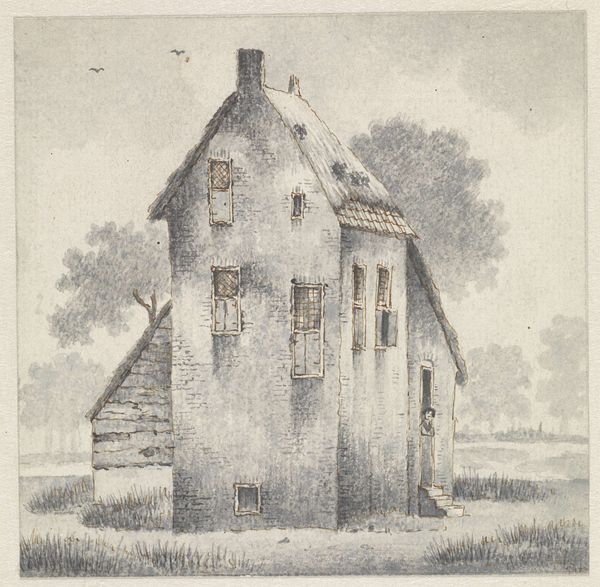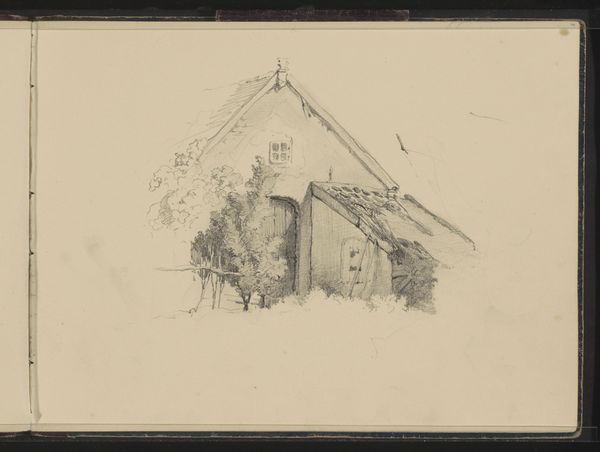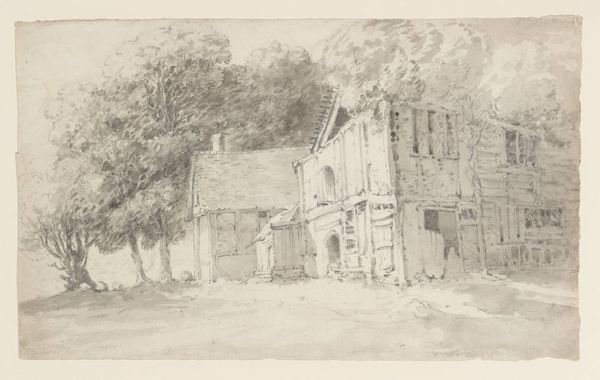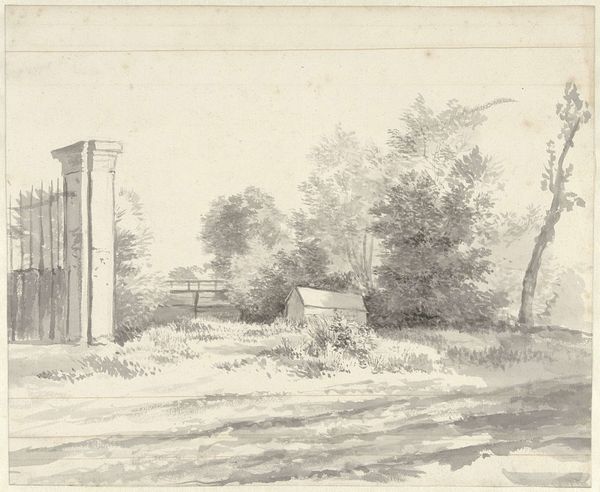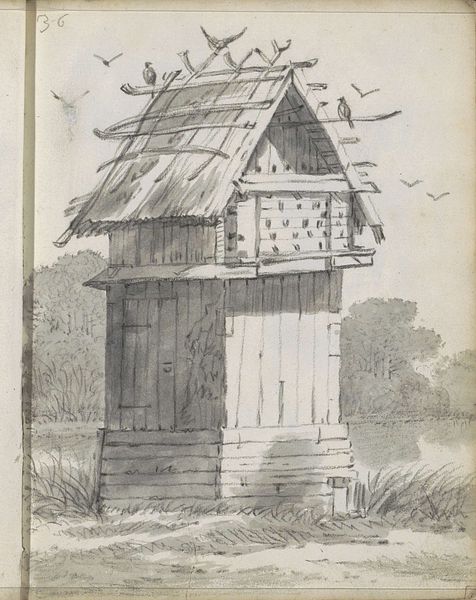
drawing, print, plein-air, paper, watercolor, ink, chalk, graphite
#
drawing
# print
#
plein-air
#
landscape
#
etching
#
paper
#
personal sketchbook
#
watercolor
#
ink
#
romanticism
#
chalk
#
water
#
graphite
#
academic-art
Dimensions: 171 × 125 mm
Copyright: Public Domain
Curator: This is "Side of Rotting Barn," an evocative sketch made between 1800 and 1810 by an anonymous artist. The artwork, which now resides at the Art Institute of Chicago, uses a combination of ink, watercolor, graphite, and chalk on paper to depict its subject. Editor: There's a raw vulnerability to it, isn't there? The monochromatic palette focuses attention on form and decay. The barn almost seems to breathe its last. Curator: Indeed. Note the artist's mark-making. We see the deployment of line—hatching, cross-hatching—creating texture, shadow, and ultimately, a sense of volume on the two-dimensional surface. The artist uses both graphite and ink strategically to define the planes of the rotting barn, highlighting the eroding structure. Editor: Looking at it in its historical context, the artwork emerges at a crucial point of transformation for architectural representation. One could see this as a potent social symbol for the agrarian era—perhaps a critique of social and economic stratification as seen through its subject matter. Curator: That reading has merit, of course, but I also believe the romantic treatment transcends mere documentation, drawing one in, to find meaning. The dissolution of form reflects the artist's preoccupation with the transience of the material world. There's an inherent tension at play between precise draughtsmanship and suggestive dissolution. Editor: Absolutely. We see an intentional depiction of ruination, which can also be taken as a testament to the cyclical nature of human endeavor. Think about the societal perception of rural architecture, compared to its modern reality, at that time, and in some cases, now. The print makes a quiet, forceful point about our neglect of rural space and, really, those dependent on those structures. Curator: Perhaps. Regardless, its success is surely due in part to the way it invites the viewer to participate in deciphering the composition through its unique textural language. Editor: It’s left me with a refreshed look at structures. Something so seemingly straightforward yields such complexity on further review. Curator: And for me, it underscores the continuing relevance of visual rhetoric in understanding decay.
Comments
No comments
Be the first to comment and join the conversation on the ultimate creative platform.

